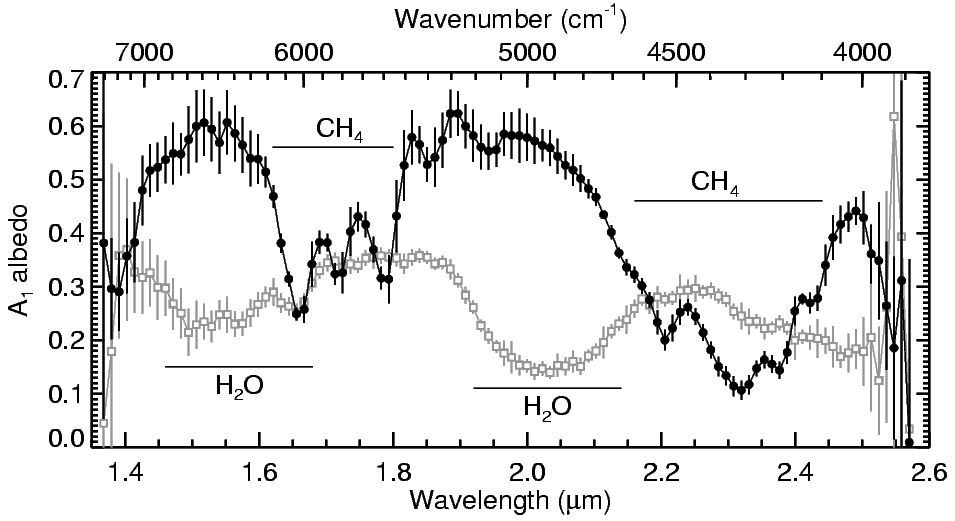
Spatial and compositional constraints on non-ice components and H2O on Pluto's surface
Published in 2002: Icarus 157, 128-138.
W.M. Grundy(1) and M.W. Buie(1)
(1) Lowell Observatory, Flagstaff Arizona.
Abstract
We present four new near-infrared spectra of Pluto, measured separately from its satellite Charon during four HST/NICMOS observations in 1998, timed to sample four evenly-spaced longitudes on Pluto. Being free of contamination by telluric absorptions or by Charon light, the new data are particularly valuable for studies of Pluto's continuum absorption. Previous studies of the major volatile species indicate the existence of at least three distinct terrains on Pluto's surface: N2-rich, CH4-rich, and volatile-depleted. The new data provide evidence that each of these three terrains has distinct near-infrared continuum absorption features. CH4-rich regions appear to show reddish continuum absorption through the near-infrared spectral range. N2-rich regions have very little continuum absorption. Visually-dark, volatile-depleted regions exhibit intermediate continuum albedos with a bluish continuum slope. By analogy with Triton, we expected that careful spectral modeling would reveal strong evidence for the existence of H2O ice on Pluto's surface, but we found only very weak evidence for its existence in the volatile-depleted regions. These data require H2O ice to play a much less prominent role on Pluto's surface than it does on Triton's.
Figure 1

Fig. 1. Grand average of the NICMOS spectra of Pluto (black, filled circles) and Charon (grey, open squares, from Buie and Grundy 2000a) showing their distinct spectral characteristics on a common albedo scale (A1 albedo is defined in the text). Error bars are based on variations between the spectra obtained at different longitudes; for Pluto, they are dominated by real longitudinal variability. Wavelengths showing strong absorptions by CH4 and H2O ices are indicated with horizontal bars.